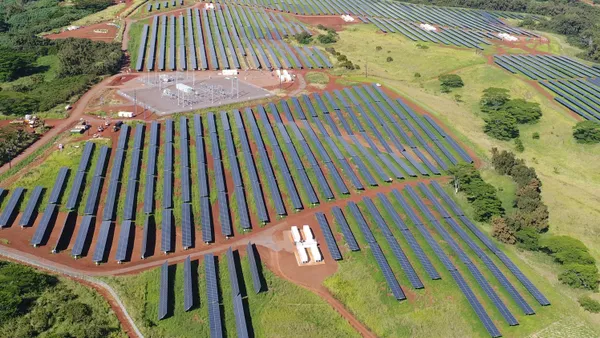Offshore wind developer Vineyard Wind and turbine manufacturer GE Vernova have begun “controlled cutting activities” on a turbine blade that scattered debris across Nantucket’s beaches after it broke last month, the companies announced today.
The cutting of the blade portion still attached is aimed at “substantially reducing the amount of the damaged blade that presents a risk for additional debris falling into the ocean,” according to a Vineyard Wind release. The cutting began on Saturday and “removed a substantial amount of the remaining portions of the damaged blade.”
The Vineyard Wind 1 blade failed on July 13, breaking “20 meters out from the root,” Vineyard Wind said. The blade continued to break further in the following days, scattering additional fiberglass debris in the ocean.
The Haliade-X turbine was both manufactured and installed by GE Vernova, which has installed 24 of the project’s 62 turbines so far. The 800-MW Vineyard Wind project is due to complete construction later this year.
“Vineyard Wind and GE Vernova are currently assessing next steps to complete any additional cutting necessary at the earliest opportunity, secure and remove the debris on the turbine platform, remove the blade root, and address the debris on the seabed,” Vineyard Wind said.
The Department of Interior’s Bureau of Safety and Environmental Enforcement has also amended the suspension order it gave to the project after the blade failed and began to fall apart due to what GE Vernova suspects was a manufacturing defect of insufficient bonding.
BSEE is now allowing Vineyard Wind to “resume certain limited additional activities, including the installation of towers and nacelles – components not associated with the blade event …. The updated Suspension Order does not enable further blade installation or power production at this time,” Vineyard Wind said.
Vineyard Wind said that in advance of issuing the amended order, BSEE had reviewed relevant materials including “an independent structural load analysis” by Det Norske Veritas, a certified verification agent, or CVA.
“The CVA is an impartial third party that must, by law, undergo screening and approval by BSEE to evaluate and vouch for the facility's adequacy,” Vineyard Wind said. “Following examination of that analysis, BSEE concluded Vineyard Wind could safely proceed with tower and nacelle installation.”
“As our investigation continues, we are serving as a federal liaison between the responsible party, Vineyard Wind 1, GE Vernova, and other federal, state, local, and Tribal agencies,” BSEE Director Kevin Sligh said in a July 26 release. “We are continuously engaged across all the incident response entities to ensure response operations are well coordinated and conducted safely through information sharing, planning and analysis of proposed activities.”
Vineyard Wind said it continues to maintain a 500-meter exclusion zone around the broken turbine and will continue using vessels, aerial surveys and ocean modeling to monitor debris.















